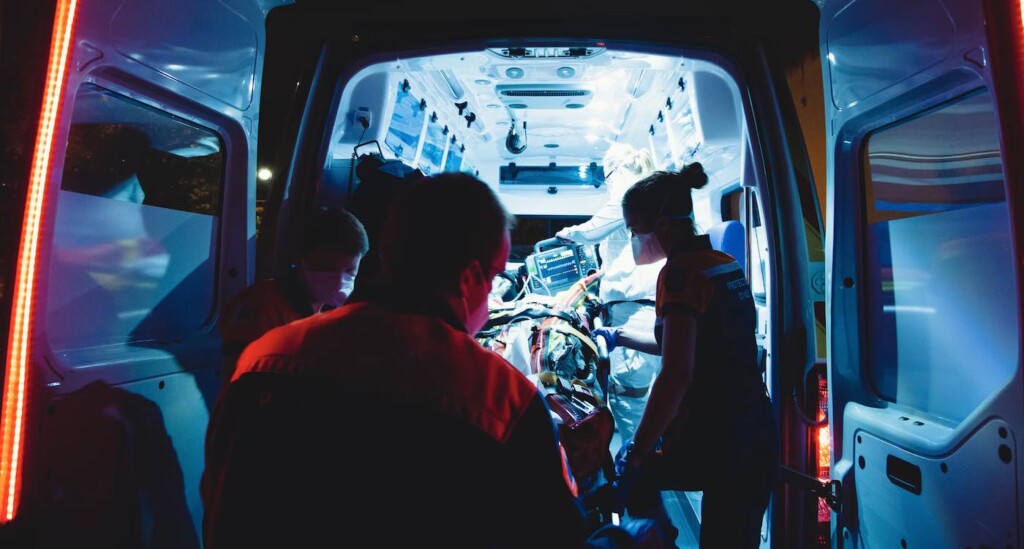
Stroke is the top cause of disability worldwide—and the second leading cause of death—but the good news is that early intervention can prevent severe consequences, and a new tool could be a game-changer.
Researchers at Brigham and Women’s Hospital developed a new test by combining blood-based biomarkers with a clinical score to identify patients experiencing large vessel occlusion strokes (LVO) with high accuracy.
“We have developed a game-changing, accessible tool that could help ensure that more people suffering from stroke are in the right place at the right time to receive critical, life-restoring care,” said Joshua Bernstock, MD, PhD, a clinical fellow in the Department of Neurosurgery at the Boston hospital.
Most strokes are ischemic, in which blood flow to the brain is obstructed. LVO strokes are an aggressive type of ischemic stroke that occurs when an obstruction occurs in a major artery in the brain.
When blood supply to the brain is compromised, the lack of oxygen causes brain cells to die within minutes, making LVO strokes a major medical emergency requiring swift treatment with mechanical thrombectomy—a surgical procedure that retrieves the blockage.
“Mechanical thrombectomy has allowed people, that otherwise would have died or become significantly disabled, to be completely restored, as if their stroke never happened,” explained Dr. Bernstock.
But brain bleeds cause similar symptoms to LVO stroke—yet treatment for each is vastly different. The new test makes it easy to distinguish one from the other while diagnosing in the field. Here’s how they did it:
Previously, the research team targeted two specific proteins found in capillary blood, one called glial fibrillary acidic protein (GFAP), which is also associated with brain bleeds and traumatic brain injury, and one called D-dimer.

In this study, they demonstrated that the levels of these blood-based biomarkers combined with the scores observed during field assessment (stroke triage for emergency destination, or FAST-ED) could identify LVO ischemic strokes, while ruling out other conditions such as bleeding in the brain.
ALTERNATIVE TREATMENT: Traditional Chinese Herb Delivered by IV Improves Stroke Victims’ Recovery, Shows Large Scientific Study
“The earlier this intervention is enacted, the better the patient’s outcome is going to be. This exciting new technology has the potential to allow more people globally to get this treatment faster,” said Bernstock, senior author of the study published in the journal Stroke.
In their diagnostic accuracy study, the researchers looked at data from a cohort of 323 patients coded for stroke in Florida and found that combining the levels of the biomarkers GFAP and D-dimer with FAST-ED scores less than six hours from the onset of symptoms allowed the test to detect LVO strokes with 93 percent specificity and 81 percent sensitivity.
Furthermore, the test ruled out all patients with brain bleeds, signaling that the technology may ultimately also be employed to detect intracerebral hemorrhage in the field.
Bernstock’s team also sees promising potential future use of this accessible diagnostic tool in low- and middle-income countries, where advanced imaging is not always available. It might also be useful in assessing patients with traumatic brain injuries.
WOW: Grocery Carts Can Tell Researchers Who May Be at Risk for Stroke –And 39 Shoppers Were Diagnosed
Next, they are carrying out another prospective trial to measure the test’s performance when used in an ambulance. They have also designed an interventional trial that leverages the technology to expedite the triage of stroke patients by having them bypass standard imaging and move directly to intervention.
“In stroke care, time is brain,” Bernstock said. “The sooner a patient is put on the right care pathway, the better they are going to do.
DID YOU KNOW? Seniors Over 70 Who Walk Just an Extra 500 Steps a Day Lower Risk of Heart Failure or Stroke by 14 Percent
“Whether that means ruling out bleeds or ruling in something that needs an intervention, being able to do this in a prehospital setting with the technology that we built is going to be truly transformative.”
SHARE THE LIFE-SAVING BREAKTHROUGH With Health Workers on Social Media…




















